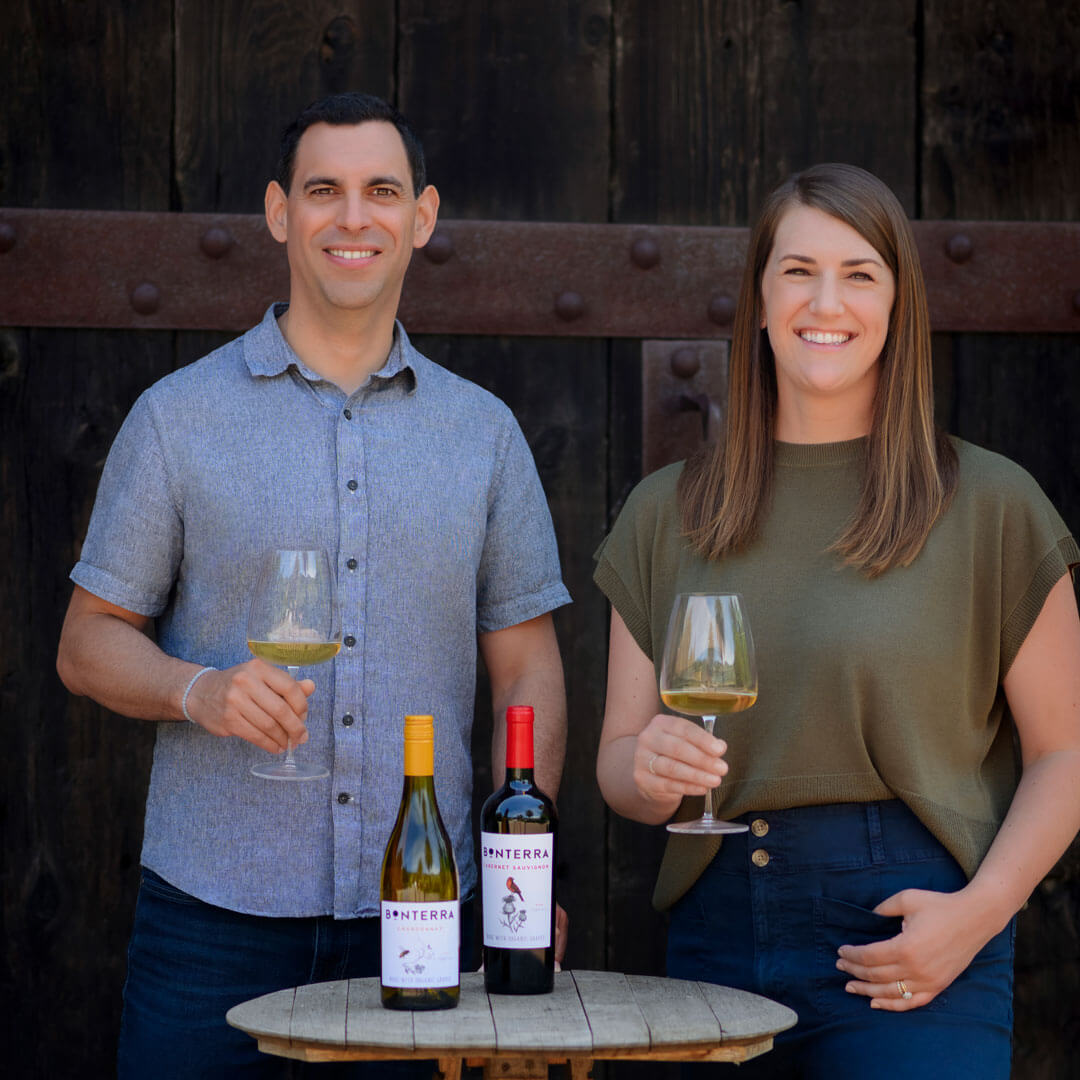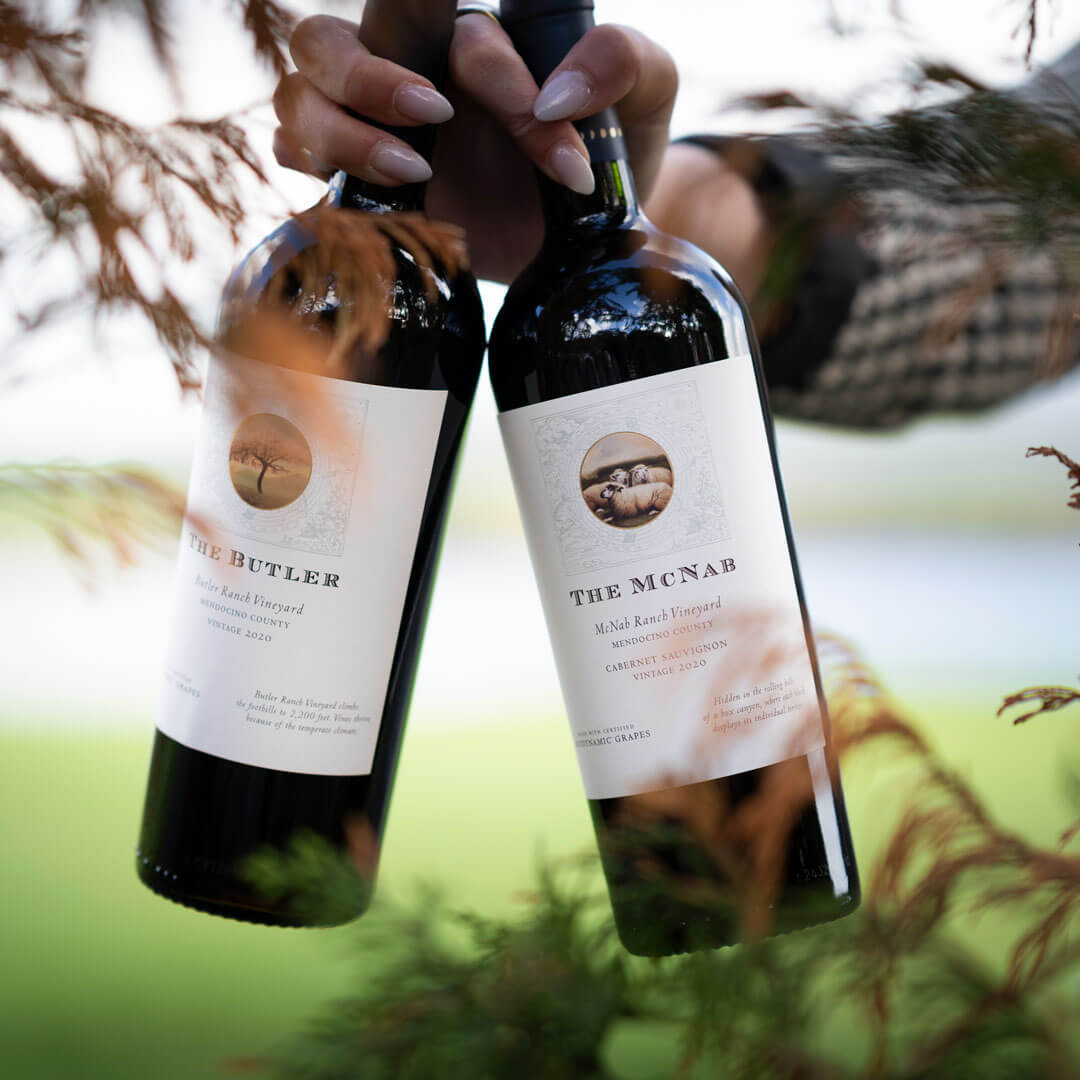Wine is a living thing, made of living organisms. From the time grapes start fermenting to the moment you taste it, this unique beverage is on a journey of evolution, and the environment your wine inhabits until you drink it can make or break that journey. Red wine, white wine, and anything in between requires proper wine storage. Wine storage choices often determine whether your bottle continues to taste the way the winemaker intended, or whether it takes a turn for the worse.
Because organically farmed wines do not have large amounts of preservatives in them, they are especially sensitive to environmental influences during storage. In this post, we’ll cover the storage basics you need to know to keep your organically grown wines tasting their best.
Understanding Wine Storage Fundamentals
The best place to store wine is consistently dark, cool, moderately humid, and calm with no vibrations. Ideally, it’s a spot that stays around 55°F with minimal light exposure, and a steady 60-70% humidity. Bottles should be stored on their sides, so that the wine keeps the cork moist from the inside. When corks dry out, more air can get in and start oxidizing the wine – changing its aromas, flavors and color.
Steady humidity keeps the cork hydrated from the outside, helping it do its job of keeping wine in, and all but the tiniest amount of air out. If humidity gets too high, however, mold and mildew can start to grow, potentially infiltrating the cork and contaminating the wine.
Hot environments cause wines and their aromatic compounds to expand, forcing their way through a cork’s airways and often pushing the cork (and some of the aromatics) partially out of the bottle. If an environment cools down significantly, the reverse happens: wine condenses and draws outside air into the bottle, again causing premature oxidation. Exposure to light or frequent vibration also alters the delicate chemical compounds in wine, reducing the wine’s pleasant aromas and often transforming them to other chemical compounds with less pleasant aromas. One good way to protect wine from vibrations or light contamination is by storing your bottles in a wine storage cabinet or on a wine rack.
Controlling environmental influences allows wine to age slowly and naturally, with minimal disruption to its chemical balance and tasting experience.
Special Storage Tips for Organic and Organically Grown Wines
At a certified organic winery, no unnecessary sulfites are added to wine during the fermenting process. Sulfites, also known as sulfur dioxide (SO2) and its derivatives, are natural chemical compounds that play a crucial role in nature and in the preservation of food and beverages. Sulfites help prevent oxidation and microbial growth, and their presence in wine helps to maintain freshness and stability.
However, “organic wines” in the US may not add any sulfur in the winemaking process, so the only sulfites present in organic wines are the ones that naturally occur in fermentation. The USDA “Made with organic grapes” certification allows a small amount of sulfur to be added during winemaking, but the finished wine can have no more than 100 parts per million of sulfites – less than 1/3 of the amount non-organic wines are allowed. As organically grown wines in this category, Bonterra wines’ sulfite levels average between 70 and 90 parts per million.
Does this mean that organic and organically grown wines aren’t able to age gracefully? Absolutely not! It just means that they are more sensitive to environmental conditions that can shift their chemical or microbial balance. To enjoy these pure, clean wines as they were intended, proper storage is essential.
Practical Wine Storage Tips for Home
Obviously not everyone has a wine cellar, but basements or regular cellars can often provide the dark, cool, calm, and humid conditions needed for wine storage. Just avoid areas with light and vibrations—don’t store wine next to appliances like washers, dryers, or refrigerators. Focus on finding the most stable, cool spot in your home. There’s a wine storage solution for everyone.
It’s a good idea to monitor your storage space with a thermometer and humidity gauge to be sure they fall within the ideal ranges (55°F and 60-70% humidity), and do not fluctuate too much (under 10 degrees is probably ok). The more volatile your temperature and humidity, the less time your wine should age there.
If you don’t have an ideal storage location in your house, it’s not the end of the world. Just open up and enjoy your wine as soon as you can!
Advanced Storage Solutions
For people with larger wine collections or serious investments in wine, custom-built wine cellars with environmental controls or off-site professional wine storage are typically the best wine storage solutions. Some wine enthusiasts might even invest in wine refrigerators and large metal wine racks for storage. These options can minimize variability in temperature and humidity, and disruption from light and vibration on a larger scale.
While the cost of these storage solutions can add up, the benefit of keeping your valuable wines free from damage is probably worth the expense. If you’ve got a serious collection of wine – and particularly, low-sulfite organic or organically grown wines – you may want to explore these options to protect your investment.
Maintaining and Checking on Your Stored Wines
So you’ve chosen a storage location for your wines, confirmed it’s consistently cool, dark, humid and calm, and gently placed your bottles on their sides. All that’s left now is to check on them from time to time to be sure your environmental conditions are steady, and everything looks normal.
A common question among wine lovers is how long does red wine last after opening? The answer is similar no matter what type of wine you’re consuming, red or white. Many times, a wine bottle can clue you into a brewing problem even before you pull the cork. Here are some warning signs to look for:
- Drips or traces of dried wine around the outside of the cork. Leaking bottles indicate a failed seal, and the likelihood of premature oxidation. It is best to open these bottles sooner rather than later, since the wines may taste much older than they would normally.
- The level of wine in the bottle has dropped. The name for the airspace between the wine and the interior of the cork is the ullage, and this is checked when a bottle is sitting upright. The ullage may gradually increase over the years, as some liquid inevitably evaporates with time, but if you see the level of wine has dropped significantly in a younger bottle, there’s a problem.
- Corks that bulge out or protrude from the mouth of the bottle. This is a telltale sign that a wine has become overheated. It’s likely that the aromas have changed, and the acidity may taste out of balance. If you see a bulging cork, open the wine as soon as possible to check if it is still drinkable; it won’t be for long.
- Moldy corks. If there’s something growing on your cork, there’s a chance it has made its way into your wine, too. Carefully clean off the mold and inspect the bottle to see how far it may have gotten. You may want to open that bottle soon.
Regular monitoring, especially with organic wines, can help you catch problems before they get out of hand. For many (if not most) wine lovers, a slight fault won’t ruin their experience of a wine – but more advanced problems will. Check your bottles regularly and don’t be afraid to open them sooner than you originally planned.
As with every living thing, wine responds to the environment it finds itself in. A properly stored wine always tastes better than one that’s been hanging out on the kitchen counter! It’s well worth investing a bit of time and effort to keep your delicious wines in the cool, dark, humid and calm conditions they need to show at their best.
Proper wine storage is essential to preserving the quality and flavor of your wines, especially when it comes to organically farmed varieties. By following the guidelines for storage conditions, you can ensure that your wines mature gracefully and maintain their intended taste. Remember, a well-stored wine always offers a superior tasting experience compared to one that has been improperly kept.
At Bonterra, we pride ourselves on crafting exquisite, organically farmed wines that reflect our commitment to sustainability and quality. Proper storage is key to enjoying the full expression of our wines. We invite you to explore our selection of wines and consider joining our wine club for exclusive access to our latest releases and special offers.
Visit Bonterra vineyard today to discover more about our organically farmed wines and how to store them properly to enhance your wine-drinking experience. Can’t make it for a visit? Order wine online today and consider joining our wine club for access to exclusive offers and releases. Cheers to preserving the art of wine!




